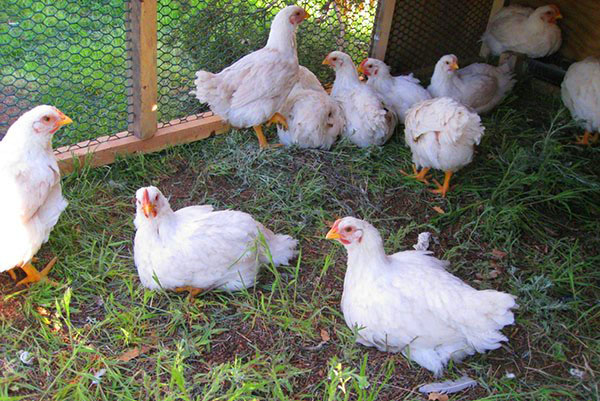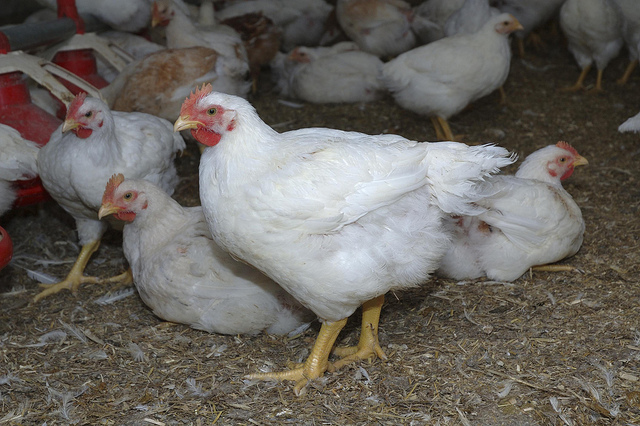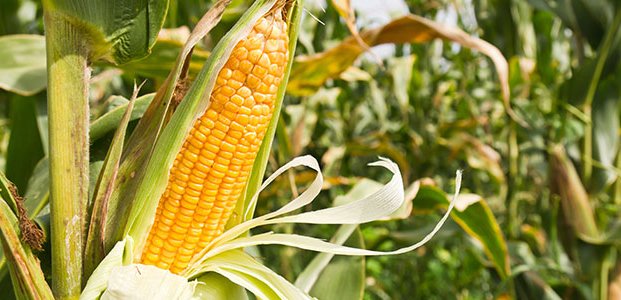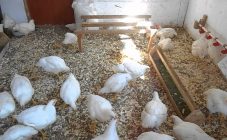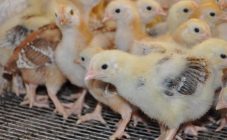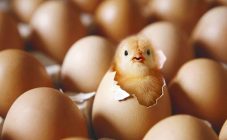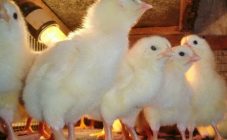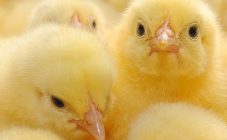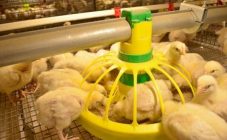Content:
Broilers are hybrids of chickens that are raised specifically for meat production. Other pets that are growing rapidly and gaining weight are sometimes referred to as broilers.
Broilers: what kind of birds
Broiler chickens tend to have a larger body size than other poultry. The general characteristics of chickens are as follows:
- the weight of an adult (2.5-3 months) chicken - 4.5 kg, rooster - 5-5.5 kg;
- leg and wing are relatively short;
- character - phlegmatic;
- the body has a correct horizontal body;
- the muscular component is well developed.
As a rule, this type of bird is kept solely for the sake of meat. They begin to rush relatively late - at 6-8 months, sometimes a year. Egg production is insignificant - 1-3 pieces per week (or 100-140 pieces per year).
The plumage of birds is mainly white, but both ash broilers and black ones can be found.
Birds have two main genetic characteristics:
- Their egg may differ by the presence of two yolks.
- The offspring, unfortunately, do not take strong signs of their parents, therefore they often grow weaker than them.
Species and breeds of broilers
Although all breeds of broiler chickens are fleshy and tenacious, experienced farmers point to several of the strongest varieties.
Ross 308
The result of English selection. The most versatile look. If the birds are well fed, they can gain 55 grams of weight in just one day. These broilers are slaughtered at 6-9 weeks. Chickens begin to develop muscle mass at a very early age. They differ in good egg production: in adulthood, a hen can lay 185 eggs per year.
Ross 708
The main difference between Ross 308 and Ross 708 is faster weight gain. In just 35 days (subject to all breeding rules), birds gain weight of 3 kg. Therefore, as early as 1-1.5 months, it is possible to slaughter, a large chicken will cost the same as an adult chicken.
Cobb 500
The bird has a massive carcass, which is yellow. Customers like this appearance very much, therefore this breed is called the best for industrial cultivation. Thanks to the rapid gain in fat mass, birds are ready for slaughter already at 2.5 months.
Broiler-M
It was possible to get such a hybrid as a result of crossing synthetic and small chickens. The bird has a small body structure, due to which the number of heads in one pen or cage can be advantageously increased. The average weight of an adult rooster is 2.4-2.9 kg. Experienced farmers, who already know everything about broilers, note that Broiler-M starts to rush relatively early - at 4.5-5 months. One bird's egg weighs about 65 grams, of which a hen can carry 165-170 pieces per year.
Change
Derived from the crossing of two other hybrid breeds: Hybro-6 and Bloiler-6. Roosters of the breed love to get up very early, chickens delight with their high-quality and large (60 grams) eggs. The total amount of "egg" profit per year is 140 pcs.
Hybro-6
The breed belongs to four years old. Created by crossing Cornish and White Plymouthrocks. At the age of 1.5 months, these broilers gain weight 1.5-1.8 kg, however, massive males (up to 2-2.2 kg) can also be in the brood.For 400 days, adult Hybro-6 hens can lay 160-170 eggs. They are distinguished by a very calm character.
In addition to the breeds of broilers named, other meat breeds of chickens should also be indicated, including the following: colored tricolor, French Sasso XL 551, naked Naked Neck.
Broiler chicken care
Broiler chickens grow well, it is not recommended to keep them for more than 70-75 days. After this period, the bird can no longer grow and gain weight so quickly, however, it consumes more and more feed. In addition, the meat becomes more tough after two months.
The broiler chicken feels great both in the cage and in the pen. Each of the options has its own characteristics.
So, for the first option (cage rearing), the most important condition is 5-10 birds in one section. Cages should be made according to the age of the birds. Broilers should not be allowed to walk freely, because then they will not be able to gain weight in accordance with the norm. However, they should not be cramped. Experienced farmers give their advice on choosing the size of the cage: each of the birds should be able to freely pass to the drinker and feeder. From time to time, the cages can be opened and the chickens can be allowed to walk a little.
The pen is designed for a larger number of heads - from 10. It takes up more area and requires additional measures to combat dampness, but it costs significantly less than the first option.
Anyone interested in a home broiler should learn how to properly care for it. There are several requirements:
- air humidity - optimally 68-73%;
- a sufficient number of light hours - 12-14 (if the sun sets faster in the region, artificial lighting will have to be used);
- lack of drafts;
- cleanliness in cages (otherwise the bird will become infected with infectious diseases and fall);
- ventilation - fresh air promotes nitrogen removal and better development of birds;
- periodic disinfection of cells;
- availability of fresh and warm (+ 22-24 ℃) drinking water;
- constant availability of fresh feed;
- the optimal temperature regime is + 20-22 ℃.
If you breed broiler chickens, you will have to purchase a large amount of grain. Adult birds (from 2 months old) are unpretentious in food. Their diet can be based on whole grains of barley, wheat, corn, peas or mixed feed. Supplements useful for chickens will be: greens, boiled porridge, small fish, fish oil.
Neither broller chickens nor adult birds can eat foods such as:
- boiled potatoes;
- sand;
- bread (regardless of variety);
- any expired products;
- medicines for humans.
Although broilers have a good survival rate, they can still get sick, especially if the owner does not monitor the cleanliness and dampness of the pen. Contact your veterinarian as soon as the chicken starts wheezing, sneezing, sitting down, or grabbing feed too quickly. Sometimes birds may have swollen legs, discharge from the nose, mouth. As a rule, it is possible to cope with the problem thanks to a course of antibiotics.
The specifics of caring for broiler chickens
From day one, broiler chicks should have unlimited access to a plate of food and water. The first food should be millet. A small amount of egg powder is also allowed, but not egg yolk. A weak solution of potassium permanganate can be added to the water.
Babies are prohibited from wet food, as well as greens. There should be enough space in the box or cage so that each chick can see where his feeder is.
Starting from the fifth day, special commercial feed for broilers can be introduced into the diet of chicks. Also, each individual chicken should be given one drop of "Trivitamin" - a remedy to treat vitamin deficiency.
Every day, you can add new products to the chicks' food, including cottage cheese, egg yolk, and moisten the feed with milk whey.The food norm for animals of this age is 15-20 grams per day.
Keeping their cages clean and dry is essential to keep chicks from dying. Care should be taken to prevent chickens from getting wet while eating.
Starting from the 10-14th day of a broiler's life, he can be given boiled cereals with added greens. The daily food intake is 30 grams. In order to prevent infectious diseases, Baycox should be added to the water in a ratio of 1 gram per 2 liters.
After 20 days before meals, they begin to mix crushed eggshells, proteinaceous plant foods. It is absolutely necessary to refuse sand.
Broilers often begin to die at the age of 10-16 days. The owner may notice the day before that the chick is lethargic, he can vilify. Most likely, the reason for everything is an infectious disease. The problem can be prevented if the chicken is drunk with an antibiotic in a timely manner.
Chicks should be kept away from adult chickens, which can infect young animals, for as long as possible.
It will not be so difficult to care for chickens that are already a month old. The temperature regime at this age can be reduced to 23-25 degrees Celsius. Lighting should be 14-16 hours, not around the clock.
In addition, feeding can be more varied. Up to 40% of the total food volume can be corn. If the keeping of the birds was correct, then at the age of one month the weight of the chick can be 700-800 grams.
Home breeds
Broiler Cobb 500 or Ross 308: which is better - this question often worries young farmers. As the description of these breeds in the specialized literature makes it clear, both breeds deserve attention, since they are in the TOP-10 of the most effective broiler chickens. The choice of the owner should depend on his personal wishes. So, for those who want to raise birds for slaughter as soon as possible or prefer chickens with yellow carcasses, it is better to stop at the first option - Cobb 500. Only these birds have a genetic predisposition to yellow skin color. The feeding period of such a bird is somewhat shorter than that of other breeds. In just 35 days, a Cobb 500 chicken can already weigh 2 kg, at 42 days - 2.5 kg. The owner will not have to spend money on the treatment of birds, because they are in good health. The survival rate of the breed is 94-98%.
The Ross 308 broiler should be preferred if the farmer is looking for a versatile, durable breed. The main difference between this species is good, as for broilers, egg production. In addition, Ross 308 has a good hatchability rate. Breeding it will become profitable if the farmer plans to be engaged in the "bird business" for more than one season. Thus, he will have more and more offspring.
It is virtually impossible to say unequivocally which broilers are better, because each breed has its own advantages. In addition, there are many factors that affect the quality of poultry meat, its hilarity, the quantity and quality of eggs. Only by taking good care of your hens and following the basic advice of experienced farmers and veterinarians can you expect a good result.
